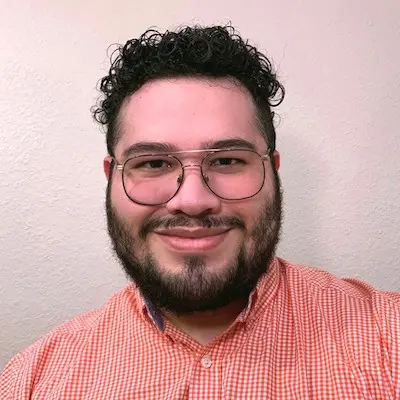One of the greatest advantages of attending a major research institution like the University of Wisconsin-Madison is the chance to work in a laboratory and take part in groundbreaking research. For many undergraduates, it’s a way to gain some good credentials for their resume or polish their graduate school applications. But for materials science and engineering undergraduates Aiden Ross and Celeo Matute Diaz, research is at the core of their undergraduate experience, and both have embraced their roles as investigators.
 Aiden Ross
Aiden Ross
In 2020, Ross and Matute Diaz were each named UW-Madison sophomore research fellows and both were selected in 2021 as Hilldale fellows, programs that provide funding for undergraduate research at the university.
Ross currently works with MS&E Assistant Professor Jiamian Hu conducting computational research on ferroelectric nanotubes. Matute Diaz works with Professor Michael Arnold studying the two-dimensional material graphene.
For almost as long as he can remember, Ross, a Wisconsin native, wanted to be a research engineer and follow in the footsteps of his father, a chemical engineer, and his grandfather, an aerospace engineer. In fact, as a child he remembers making plans when he grew up to pursue chemical engineering during the week and aerospace engineering on the weekends.
But his mother was a philosopher, so he was also interested in political science. It wasn’t until his freshman year at UW-Madison that he made the decision to pursue materials science and engineering, which combined all of his interests.
“Making things work is cool and exciting,” he says. “But I think understanding why things work is much more interesting to me.”
Ross gravitated toward computational research, which he has been able to pursue throughout the pandemic. It involves using computational modeling to determine how nanotube height and wall thickness can change the properties of ferroelectric nanotubes made of lead zirconate titanate.
While much of that work can be done on the supercomputers found on campus, some of the funding from his research fellowships has helped pay for computing time on more powerful machines off campus. He also used the funds to present his research at the Materials Research Society conference in fall 2021.
 Celeo Matute Diaz
Celeo Matute Diaz
Ross plans to continue his computational research in graduate school and hopes to eventually become an academic researcher. “Working on research as an undergraduate has taught me a lot of important methods that help speed up computational research,” he says. “I want the intellectual freedoms to pursue the things that I think will make the world a better place.”
Celeo Matute Diaz is also dreaming of creating a better world. In middle school in San Pedro Sula, Honduras, he remembers seeing an online video explaining nanotechnology and the 2-dimensional material graphene, which has incredible strength and unique electrical properties. The material became his obsession. “But because I lived in Honduras, I thought my odds of ever working with graphene were super low,” he says.
In high school, however, Matute Diaz and his family moved to Nashville, Tennessee, and in 2017, he came to UW-Madison for its Engineering Summer Program. Not only did he fall in love with Madison, he also found out that researchers at the university study graphene, so he set up a meeting with Arnold to learn more.
When Matute Diaz started as a freshman, he joined Arnold’s lab and currently researches graphene nanoribbons, tiny strips of graphene that have a whole host of potential uses in materials and electronics.
During the worst of the pandemic, Matute Diaz pursued his sophomore research fellowship at home in Nashville. He had to switch from bench work to computational research, modeling the way graphene nanoribbons behave on germanium substrates. Since summer 2021, however, he has been back in the lab and is currently using chemical vapor deposition to grow hexagonal boron nitride on germanium.
Matute Diaz also plans to go into academia, and hopes to become a professor, which combines his love of research and his love of mentoring other students. He also says he would like to represent the Hispanic community, which needs more representation in engineering.
Though he says he will likely not continue working with graphene in the future, he is interested in branching out to other novel two-dimensional materials that will enable a new generation of technologies. “As a kid, you have these thoughts about what the future can be like, but then you recognize these barriers that are preventing us from getting to that point,” he says. “I think the exciting part of research is finding solutions for these challenges.”